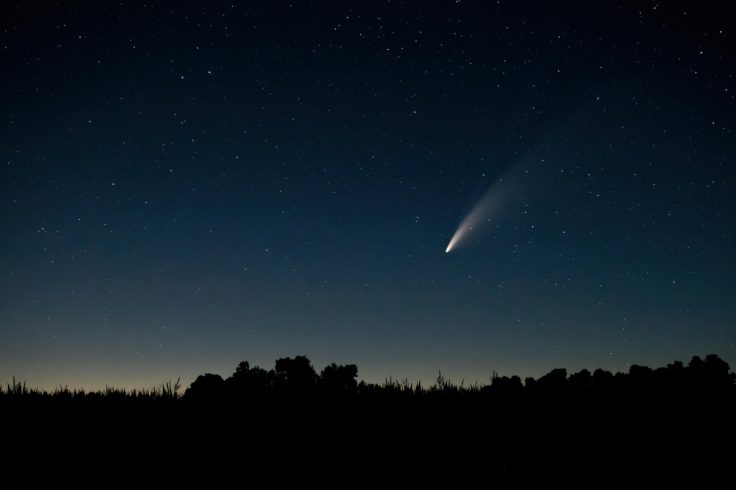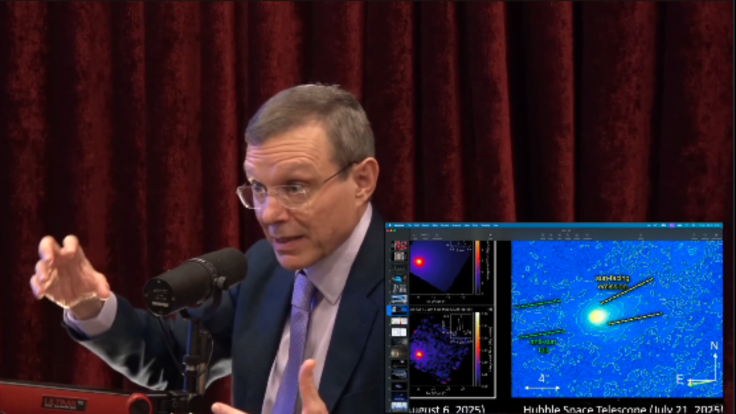3I/ATLAS 'Unveils' Alien Tech: Why Its Jupiter Trajectory Defies Spacetime
Is 3I/ATLAS 'alien tech'? Avi Loeb cites 8 anomalies, including a trajectory that 'defies spacetime', as it faces an 'acid test.'

An interstellar visitor is facing its trial by fire today, and one of the world's most prominent astronomers is watching for the verdict. Some believe the object, 3I/ATLAS, may be about to unveil 'alien tech.'
The object is making its closest approach to the sun on Wednesday, 29 October. This moment, known as perihelion, is what one prominent scientist is calling the 'acid test'—a critical moment that could help determine if this mysterious object is just a comet, or an alien spacecraft.
Avi Loeb, a professor of science at Harvard University, is speculating that this is the perfect time for an artificial object to reveal itself.

What Is Avi Loeb's 'Acid Test' for Comet 3I/ATLAS?
The interstellar object, first detected in July, is reaching the point in its orbit where it is closest to the sun. According to Loeb, if 3I/ATLAS were a spacecraft, this perihelion would be the ideal moment for it to 'change its velocity.'
'The perihelion time for 3I/ATLAS was today at 11:47 UT (7:47 Eastern Time) according to the JPL Horizons fit to its trajectory. The uncertainty is only a few minutes,' Loeb said.
The 'acid test' is about what happens next, under the intense heat and gravity of the sun. 'If it is a natural comet glued together by weak forces, its heating by 770 watts per square metre may break it up into fragments which evaporate more quickly as a result of their large surface area per unit mass,' Loeb explained.
'The resulting fireworks might generate a much brighter cometary plume of gas and dust around it. However, if 3I/ATLAS was technologically manufactured, it might manoeuvre or release mini-probes. Other technological signatures include artificial lights or excess heat from an engine.'

The 'Eight Anomalies' That Puzzle Scientists About Comet 3I/ATLAS
This level of speculation is not without cause. Loeb, who created a 'Loeb Scale' for ranking objects on their likelihood of artificial origin, has given Comet 3I/ATLAS a score of 4 out of 10.
'3I/ATLAS is most likely a comet of natural origin, but there are 8 anomalies that give it a rank of 4,' Loeb said.
Dear Friends, As I predicted, 3I ATLAS is now heading out from the inner solar system towards Jupiter, w/o any noticeable maneuvers towards Earth. Earth, moving in its orbit, is now chasing 3IATLAS! Based on its unlikely spacetime trajectory, 3I is a probe, IMO, but merely that. pic.twitter.com/RGhRCj2JYL
— Dr. John Brandenburg (@PhdBrandenburg) October 31, 2025
These 'surprising qualities' are statistical long-shots that make the object deeply unusual. They include:
- A 'Fine-Tuned' Trajectory: The comet's path is 'aligned to within 5 degrees with the ecliptic plane' of our planets, a statistical likelihood of only 0.2 per cent.
- An 'Anti-Tail': During July and August 2025, the object 'displayed a sunward jet (anti-tail) that is not an optical illusion from geometric perspective, unlike familiar comets'.
- Massive Size: Its nucleus is estimated to be 'about a million times more massive' than 'Oumuamua (the first interstellar object, discovered in 2017) and 'a thousand times more massive' than 2I/Borisov (the second, seen in 2019).
- Suspicious Timing: Loeb notes its arrival time was 'fine-tuned to bring it within tens of millions of kilometres from Mars, Venus and Jupiter and be unobservable from Earth at perihelion', calculating the likelihood of this timing at a minuscule 0.005 per cent.
- A Trajectory That 'Defies Spacetime': Beyond its suspicious flyby timing, the object's trajectory near Jupiter has raised alarms. Some researchers have pointed out that its acceleration and path mirror theoretical 'Oberth manoeuvres', where a craft fires engines at its closest approach to a massive body (like Jupiter) to gain extreme velocity. This manoeuvre, if confirmed, would be impossible for a natural comet and would suggest a deliberate, powered trajectory—a move that seemingly 'defies' a natural gravitational path.
What We Know About the Composition of Comet 3I/ATLAS
While its behaviour is strange, we do have some data on what Comet 3I/ATLAS is made of. According to Loeb, the plume of gas coming from its surface is not what we typically see in our own solar system's comets.
It is made 'mostly of carbon dioxide (87 per cent by mass), carbon monoxide (9 per cent by mass) and water (4 per cent by mass).' This CO2-dominant composition, as opposed to a water-ice-dominant one, adds to its alien nature. This, combined with its other anomalies, has led some to speculate its unnatural composition is a sign of 'alien tech,' perhaps a byproduct of a propulsion system or industrial manufacturing, as its makeup is not what is expected from a natural comet.

Why We Must Take Comet 3I/ATLAS Seriously, According to Loeb
While the mystery remains, Loeb insists that the stakes are too high to dismiss the possibility of an artificial origin. 'We have to collect as much data as possible to figure out its nature. The implication of alien technology would be huge and therefore we must take it seriously,' he said. 'This is no longer just speculation; the data is forcing us to question our assumptions.'
To put the object's scale into perspective, Loeb offered a humbling comparison: 'Our biggest rocket, Starship, is a hundred times smaller than 3I/ATLAS, so in case it is technological—its sender master technological capabilities that are well beyond those that we possess.'
For now, the scientific community must wait for the data from its solar flyby. 'Nature is more imaginative than the best script writers for science fiction movies in Hollywood,' Loeb concluded. 'Rather than imagine who might be our dating partner, we better observe it.'

Amid the speculation, NASA has reported that Comet 3I/ATLAS 'poses no threat to Earth and will remain far away,' confirming it is the 'third known object from outside our solar system to be discovered passing through our celestial neighbourhood.'
3I/ATLAS is now undergoing its 'acid test,' and the results could change our understanding of the universe. Is it a natural comet with a bizarre list of anomalies, or is it, as Avi Loeb suggests, a piece of advanced 'alien tech' capable of 'defying spacetime' with powered manoeuvres?
As the world's astronomers wait for the data, the rest of us are left to wonder.
© Copyright IBTimes 2025. All rights reserved.


















